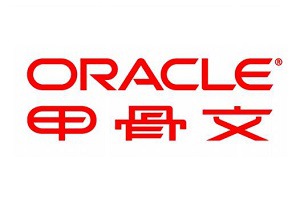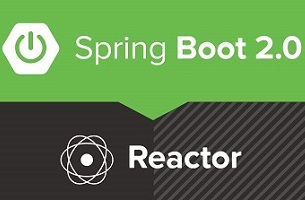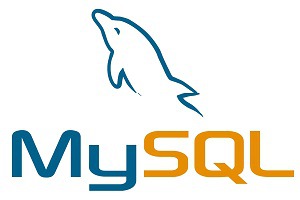NOT IN子查询中出现NULL值对结果的影响你注意到了吗
前言
开发人员写的SQL语句中经常会用到in,exists,not in,not exists 这类子查询,通常,含in、exists的子查询称为半连接(semijoin),含not in、 not exists的子查询被称之为反连接,经常会有技术人员来评论in 与exists 效率孰高孰低的问题,我在SQL优化工作中也经常对这类子查询做优化改写,比如半连接改为内连接,反连接改为外连接等,哪个效率高是要根据执行计划做出判断的,本文不是为了讨论效率问题,是要提醒一点:not in子查询的结果集含NULL值时,会导致整个语句结果集返回空,这可能造成与SQL语句书写初衷不符。
实验
创建实验表t1,t2
greatsql> create table t1(c1 int primary key,c2 varchar(10), key idx_c1(c2)); greatsql> create table t2(c1 int primary key,c2 varchar(10)),key idx_c1(c2)); greatsql> insert into t1 values(1,'a'),(2,'b'); greatsql> insert into t2 values(1,'a'),(2,'c'); 观察下面两条语句:
select * from t1 where t1.c2 not in (select t2.c2 from t2); select * from t1 where not exists (select 1 from t2 where t2.c2=t1.c2); 这两个语句,从表达的含义来看是等价的,都是查询t1表中c2列值在t2表的c2列值中不存在的记录。
从子查询类型来看,第一条语句属于非关联查询,第二条语句属于关联子查询。所谓非关联子查询就是子查询中内查询可以独立执行,与外查询没有关系,互不影响。而关联子查询的执行依赖于外部查询,通常情况下都是因为子查询中的表用到了外部的表,并进行了条件关联,因此每执行一次外部查询,子查询都要重新计算一次。
从连接类型来看,使用not in与not exists子查询构造的语句都属于反连接,为了控制连接顺序与连接方式,这种反连接经常被改写为外连接,t1 与t2使用左外连接,条件加上右表t2的连接列 is null,也就是左外连接时没有关联上右表的数据,表达了这个含义“t1表中c2列值在t2表的c2列值中不存在的记录”。反连接改写为外连接,不会导致关联结果集放大,因为没有关联上的t1表数据只显示1条,半连接改为内连接时要注意去重。外连接语句如下所示:
greatsql> select t1.* from t1 left join t2 on t1.c2=t2.c2 where t2.c2 is null; 所以本质表达含义上,上面的三条语句都等价。
下面看一下三条语句的执行结果:
greatsql> select * from t1 where t1.c2 not in (select t2.c2 from t2); +----+------+ | c1 | c2 | +----+------+ | 2 | b | +----+------+ 1 row in set (0.00 sec) greatsql> select * from t1 where not exists (select 1 from t2 where t2.c2=t1.c2); +----+------+ | c1 | c2 | +----+------+ | 2 | b | +----+------+ 1 row in set (0.01 sec) greatsql> select t1.* from t1 left join t2 on t1.c2=t2.c2 where t2.c2 is null; +----+------+ | c1 | c2 | +----+------+ | 2 | b | +----+------+ 1 row in set (0.00 sec) 可以看出就目前的数据,三条语句执行结果是相同的。
下面向子查询的t2中插入一条c2列为null的记录。
greatsql> insert into t2 values(3,null); 再观察一下三条语句的执行结果:
greatsql> select * from t1 where t1.c2 not in (select t2.c2 from t2); Empty set (0.00 sec) greatsql> select * from t1 where not exists (select 1 from t2 where t2.c2=t1.c2); +----+------+ | c1 | c2 | +----+------+ | 2 | b | +----+------+ 1 row in set (0.00 sec) greatsql> select t1.* from t1 left join t2 on t1.c2=t2.c2 where t2.c2 is null; +----+------+ | c1 | c2 | +----+------+ | 2 | b | +----+------+ 1 row in set (0.00 sec) 可以看出,not exists表示的关联子查询与 外连接方式表达的两条语句结果相同,而not in表示的非关联子查询的结果集为空。这是因为子查询select t2.c2 from t2 查询结果含有NULL值导致的。NULL属于未知值,无法与其他值进行比较,无从判断,返回最终结果集为空。这一点在MySQL与Oracle中返回结果都是一致的。如果想表达最初的含义,需要将子查询中NULL值去除。
greatsql> select * from t1 where t1.c2 not in (select t2.c2 from t2 where t2.c2 is not null); +----+------+ | c1 | c2 | +----+------+ | 2 | b | +----+------+ 1 row in set (0.02 sec) 那么如果t1表的c2列也插入一条NULL值的记录后,结果集会怎样呢,两个表都存在c2列为NULL的值数据,那么t1表这条NULL值数据能否出现在最终结果集中呢?
greatsql> insert into t1 values(3,null); Query OK, 1 row affected (0.07 sec) greatsql> select * from t1 where t1.c2 not in (select t2.c2 from t2 where t2.c2 is not null); +----+------+ | c1 | c2 | +----+------+ | 2 | b | +----+------+ 1 row in set (0.00 sec) greatsql> select * from t1 where not exists (select 1 from t2 where t2.c2=t1.c2); +----+------+ | c1 | c2 | +----+------+ | 3 | NULL | | 2 | b | +----+------+ 2 rows in set (0.00 sec) greatsql> select t1.* from t1 left join t2 on t1.c2=t2.c2 where t2.c2 is null; +----+------+ | c1 | c2 | +----+------+ | 3 | NULL | | 2 | b | +----+------+ 2 rows in set (0.00 sec) 从执行结果来看,使用not in非关联子查询,其执行结果与其他两条语句的执行结果还是不同,因为t1.c2 使用not in在参与比较时就隐含了t1.c2 is not null的含义,所以最终结果集中不含(3,NULL)这条数据。
而not exists关联子查询,在将外查询的NULL值传递给内查询时执行子查询 select * from t2 where t2.c2=NULL,子查询中找不到记录,所以条件返回false, 表示not exists 为true,则最终结果集中含(3,NULL)这条记录。
左外left join 与 not exists相同,左表的NULL值在右表中关联不上数据,所以要返回(3,NULL)这条数据。这里要注意NULL 不等于 NULL。
greatsql> select NULL=NULL; +-----------+ | NULL=NULL | +-----------+ | NULL | +-----------+ 1 row in set (0.01 sec) 说到这里,GreatSQL支持<=>安全等于这个符号,用来判断NULL值:当两个操作数均为NULL时,其返回值为1而不为NULL;而当一个操作数为NULL时,其返回值为0而不为NULL。
greatsql> select NULL<=>NULL; +-------------+ | NULL<=>NULL | +-------------+ | 1 | +-------------+ 1 row in set (0.00 sec) greatsql> select 1<=>NULL; +----------+ | 1<=>NULL | +----------+ | 0 | +----------+ 1 row in set (0.00 sec) 所以not exists 子查询中的= 换成 <=> 时,最终结果集中去除了(3,NULL)这条数据。
greatsql> select * from t1 where not exists (select 1 from t2 where t2.c2<=>t1.c2); +----+------+ | c1 | c2 | +----+------+ | 2 | b | +----+------+ 1 row in set (0.00 sec) 注意,一般表关联时不使用<=>安全等于这个符号,想象一下,如果关联的两个表在关联字段上都存在很多NULL记录,关联后的结果集对NULL记录的关联是以笛卡尔积的形式体现的,严重影响效率,严格来说关联字段都为NULL值不能算作能匹配上。
结论
-
使用not in 的非关联子查询注意NULL值对结果集的影响,为避免出现空结果集,需要子查询中查询列加
is not null条件将NULL值去除。 -
实际使用时注意:需求表达的含义是否要将外查询关联字段值为NULL的数据输出,not in隐含了不输出。
-
一般认为not exists关联子查询与外连接语句是等价的,可以进行相互改写。
select * from t1 where not exists (select 1 from t2 where t2.c2=t1.c2); select t1.* from t1 left join t2 on t1.c2=t2.c2 where t2.c2 is null; 如果不需要输出外查询中关联字段为NULL值的数据,还需再加条件 t1.c2 is not null。
select * from t1 where not exists (select 1 from t2 where t2.c2=t1.c2) and t1.c2 is not null; select t1.* from t1 left join t2 on t1.c2=t2.c2 where t2.c2 is null and t1.c2 is not null; 这样写就与select * from t1 where t1.c2 not in (select t2.c2 from t2 where t2.c2 is not null)等价了。
Enjoy GreatSQL :)
关于 GreatSQL
GreatSQL是适用于金融级应用的国内自主开源数据库,具备高性能、高可靠、高易用性、高安全等多个核心特性,可以作为MySQL或Percona Server的可选替换,用于线上生产环境,且完全免费并兼容MySQL或Percona Server。
相关链接: GreatSQL社区 Gitee GitHub Bilibili
GreatSQL社区:
社区有奖建议反馈: https://greatsql.cn/thread-54-1-1.html
社区博客有奖征稿详情: https://greatsql.cn/thread-100-1-1.html
(对文章有疑问或者有独到见解都可以去社区官网提出或分享哦~)
技术交流群:
微信&QQ群:
QQ群:533341697
微信群:添加GreatSQL社区助手(微信号:wanlidbc )好友,待社区助手拉您进群。
 关注公众号
关注公众号 低调大师中文资讯倾力打造互联网数据资讯、行业资源、电子商务、移动互联网、网络营销平台。
持续更新报道IT业界、互联网、市场资讯、驱动更新,是最及时权威的产业资讯及硬件资讯报道平台。
转载内容版权归作者及来源网站所有,本站原创内容转载请注明来源。
- 上一篇

MediaBox音视频终端SDK已适配鸿蒙星河版(HarmonyOS NEXT)
2024年1月,HarmonyOS NEXT 鸿蒙星河版系统开发者预览版开放申请,该系统将只能安装为鸿蒙开发的原生应用,而不再兼容安卓应用。对此,阿里云MediaBox音视频终端SDK产品已实现功能的鸿蒙化迁移和重构,全面适配鸿蒙系统HarmonyOS NEXT系统。 当前, 阿里云播放器SDK预览版已面向所有鸿蒙开发者免费发布,欢迎开发者参考《获取Demo》和《SDK集成》,下载使用并提出宝贵意见! 阿里云MediaBox音视频终端SDK能满足开发者构建典型视频业务场景的需求,如:直播电商、社交娱乐和在线教育等场景。开发者可通过MediaBox音视频终端SDK,充分利用HarmonyOS NEXT的特性开发鸿蒙原生应用,为用户提供高效稳定的视频直播和视频点播体验。 在MediaBox视频终端SDK适配HarmonyOS NEXT系统后,与Android版本SDK实现平滑切换,HarmonyOS NEXT系统与Android系统间的接口变化,由MediaBox音视频终端SDK适配层消化,SDK主要接口保持不变。MediaBox音视频SDK底层音视频引擎内核适配鸿蒙NDK,上层代码全面适...
- 下一篇

PieCloudDB Database 3.0 正式发布丨数仓虚拟化技术为数据要素流转注入创新动能
3月14日,拓数派2024年度战略暨新产品发布会在上海国际会议中心圆满落幕。本次大会以「数仓虚拟化 流转数据要素」为主题,众多业内资深专家、合作伙伴济济一堂,共同探讨数据要素流转和数字技术创新等热点话题。拓数派创始人兼CEO冯雷(Ray Von)携产品团队重磅发布云原生虚拟数仓PieCloudDB Database3.0版本,并分享了数仓虚拟化技术的最新成果与其在数据要素产业的最佳实践。 图为:拓数派2024年度战略暨新产品发布会现场 随着数据乘数效应的加速释放,2024年,数据产业将不断加速成长,其催生的新业态将成为经济发展的新动力,与此同时,“数据要素×”三年行动计划的提出,也标志着我国在数据要素市场建设方面,迈出了从宏观制度安排到具体行动举措的重要步伐。拓数派创始人兼CEO冯雷(Ray Von)在发布会环节分享了公司2024年度在数据领域的战略布局:聚焦云原生虚拟数仓引擎,为数据要素价值释放保驾护航。冯雷着重介绍了拓数派作为数仓虚拟化技术的提出者,其技术在数据要素流转中为行业带来的创新价值。 冯雷表示,数据作为新型生产要素,正在推动新质生产力发展,重构新型生产关系。数字生产力加速...
相关文章
文章评论
共有0条评论来说两句吧...
文章二维码
点击排行
推荐阅读
最新文章
- SpringBoot2配置默认Tomcat设置,开启更多高级功能
- Hadoop3单机部署,实现最简伪集群
- CentOS8,CentOS7,CentOS6编译安装Redis5.0.7
- Docker安装Oracle12C,快速搭建Oracle学习环境
- Linux系统CentOS6、CentOS7手动修改IP地址
- SpringBoot2初体验,简单认识spring boot2并且搭建基础工程
- SpringBoot2整合Redis,开启缓存,提高访问速度
- Windows10,CentOS7,CentOS8安装MongoDB4.0.16
- Docker使用Oracle官方镜像安装(12C,18C,19C)
- CentOS7安装Docker,走上虚拟化容器引擎之路










 微信收款码
微信收款码 支付宝收款码
支付宝收款码